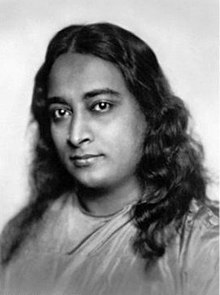imported>Chunbum Park |
imported>John Stephenson |
| (143 intermediate revisions by 5 users not shown) |
| Line 1: |
Line 1: |
| == '''[[Hausdorff dimension]]''' ==
| | {{:{{FeaturedArticleTitle}}}} |
| ''by [[User:Melchior Grutzmann|Melchior Grutzmann]] (and [[User:Brandon Piercy|Brandon Piercy]] and [[User:Hendra I. Nurdin|Hendra I. Nurdin]])
| | <small> |
| | | ==Footnotes== |
| ----
| |
| | |
| In [[mathematics]], the '''Hausdorff dimension''' is a way of defining a possibly fractional exponent for all figures in a [[metric space]] such that the dimension describes partially the amount to that the set fills the space around it. For example, a [[plane (geometry)|plane]] would have a Hausdorff dimension of 2, because it fills a 2-parameter subset. However, it would not make sense to give the [[Sierpiński triangle]] [[fractal]] a dimension of 2, since it does not fully occupy the 2-dimensional realm. The Hausdorff dimension describes this mathematically by measuring the size of the set. For self-similar sets there is a relationship to the number of self-similar subsets and their scale.
| |
| | |
| === Informal definition ===
| |
| Intuitively, the dimension of a set is the number of independent parameters one has to pick in order to fix a point. This is made rigorously with the notion of ''d''-dimensional (topological) [[manifold]] which are particularly regular sets. The problem with the classical notion is that you can easily break up the digits of a real number to map it bijectively to two (or ''d'') real numbers. The example of space filling curves shows that it is even possible to do this in a continuous (but non-bijective) way.
| |
| | |
| The notion of Hausdorff dimension refines this notion of dimension such that the dimension can be any non-negative number.
| |
| | |
| Benoît Mandelbrot discovered<ref>B.B. Mandelbrot: ''The fractal geometry of nature'', Freemann '''(1983)''', ISBN 978-0-716-711-865</ref> that many objects in nature are not strictly classical smooth bodies, but best approximated as fractal sets, i.e. subsets of '''R'''<sup>''N''</sup> whose Hausdorff dimension is strictly greater than its topological dimension.
| |
| | |
| | |
| === Hausdorff measure and dimension ===
| |
| Let ''d'' be a non-negative real number and ''S'' ⊂ ''X'' a subset of a metric space (''X'',''ρ''). The ''d''-dimesional Hausdorff measure of scale ''δ''>0 is
| |
| :<math> H^{d*}_\delta(S) := \inf \{\sum_{i=1}^\infty r_i^d : S\subset\bigcup_{i=1}^\infty B_{r_i}(x_i), r_i\le\delta \}</math>
| |
| where B<sub>''r''<sub>''i''</sub>(''x''<sub>''i''</sub>) is the open ball around ''x''<sub>''i''</sub> ∈ ''X'' of radius ''r''<sub>''i''</sub>. The ''d''-dimensional Hausdorff measure is now the limit
| |
| :<math> H^{d*}(S) := \lim_{\delta\to0+} H^{d*}_\delta(S)</math>.
| |
| As in the Carathéodory construction a set ''S'' ⊂ ''X'' is called ''d''-measurable iff
| |
| :<math> H^{d*}(T) = H^{d*}(S\cap T)+ H^{d*}(T\cap X\setminus S)</math> for all ''T'' ⊂ ''X''.
| |
| A set ''S'' ⊂ ''X'' is called Hausdorff measurable if it is H<sup>''d''</sup>-measurable for all ''d''≥0.
| |
| | |
| ''[[Hausdorff dimension|.... (read more)]]''
| |
| | |
| {| class="wikitable collapsible collapsed" style="width: 90%; float: center; margin: 0.5em 1em 0.8em 0px;"
| |
| |-
| |
| ! style="text-align: center;" | [[Ideal gas law#References|notes]]
| |
| |-
| |
| |
| |
| {{reflist|2}} | | {{reflist|2}} |
| |}
| | </small> |
Latest revision as of 09:19, 11 September 2020

Paramhansa Yogananda circa 1920.
Paramhansa Yogananda (5 Jan 1893–7 Mar 1952) was one of the first Indian teachers from the Hindu spiritual tradition to reside permanently in the West, and in particular, he was the first to teach yoga to Americans. He emphasized the universality of the great religions, and ceaselessly taught that all religions, especially Hinduism and Christianity, were essentially the same in their essence. The primary message of Yogananda was to practice the scientific technique of kriya yoga to be released from all human suffering.
He emigrated from India to the United States in 1920 and eventually founded the Self-Realization Fellowship there in Los Angeles, California. He published his own life story in a book called Autobiography of a Yogi, first published in 1946. In the book, Yogananda provided some details of his personal life, an introduction to yoga, meditation, and philosophy, and accounts of his world travels and encounters with a wide variety of saints and colorful personalities, including Therese Neumann, Mohandas K. Gandhi, Luther Burbank, and Jagadis C. Bose.
Paramhamsa, also spelled Paramahamsa, is a Sanskrit title used for Hindu spiritual teachers who have become enlightened. The title of Paramhansa originates from the legend of the swan. The swan (hansa) is said to have a mythical ability to sip only the milk from a water-and-milk mixture, separating out the more watery part. The spiritual master is likewise said to be able to live in a world like a supreme (param) swan, and only see the divine, instead of all the evil mixed in there too, which the worldly person sees.
Yogananda is considered by his followers and many religious scholars to be a modern avatar.
In 1946, Yogananda published his Autobiography of a Yogi. It has since been translated into 45 languages, and in 1999 was designated one of the "100 Most Important Spiritual Books of the 20th Century" by a panel of spiritual authors convened by Philip Zaleski and HarperCollins publishers.
Awake: The Life of Yogananda is a 2014 documentary about Paramhansa Yogananda, in English with subtitles in seventeen languages. The documentary includes commentary by George Harrison and Ravi Shankar, among others.[1][2]
